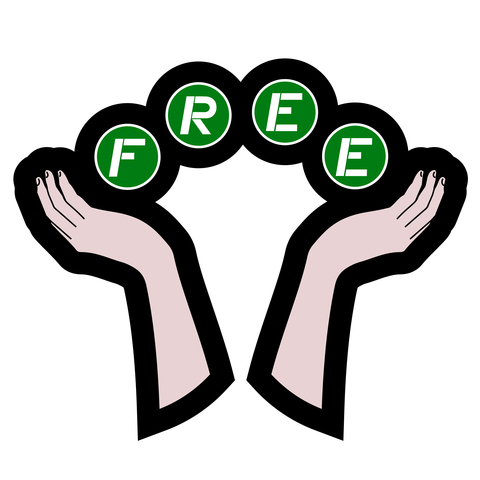FREE is powerful, but dangerous
 “Free” is a very effective power word. It grabs your reader’s attention and may even convince him to take that next conversion step.
“Free” is a very effective power word. It grabs your reader’s attention and may even convince him to take that next conversion step.
However, if you use “free” incorrectly, it could cost you.
Does “free” remove value?
I recently witnessed the following scene.
A 15-year-old boy uses color ink to print the informational page for a PC that he wants to buy (Let’s not kid ourselves – that he wants his mother to buy). The printed description has a picture of the computer, so the printer definitely uses some color ink.
His mom sees the printout and says, “Next time, could you print something like that in grayscale so we can save the color ink?”
The son replies, “But it’s the free ink that came with the printer. It didn’t cost us anything.”
The discussion continued and it consisted mostly of his mom asking him to conserve ink and he kept stating that it was free. (It was quite fun to watch as a third party, but I digress.)
Although most of us are probably not trying to reach a 15-year-old demographic, the point is that he saw the ink as something that had no value because it was free.
Put a price tag on “free” products and services
It’s great to offer a free content marketing evaluation or to entice website visitors with a free product sample. However, be sure to include the value of the free product or service.
If you don’t include something as simple as “$200 value” or whatever the true cost of the product or service would be, why would your clients think it is valuable?
Including a waived price/value to the free item or service can:
- Increase conversions because potential clients understand the deal they are getting
- Keep clients from insisting you give them similar products or services for free
- Give a glimpse into your prices and (hopefully) minimize the number of inquiries you receive from people who cannot afford your services or products – saving your time to focus on those who can.
Make sure it’s not always free
In addition to giving your service or product a value, be sure to limit your offer. If something is always free, it loses whatever value you assign to it.
Utilize the principle of scarcity to further entice your audience. By telling your website visitors that your free offer is only for a limited time, you are adding additional value to it – and encouraging an action sooner rather than later.
Keep “free” in your arsenal
Don’t remove “free” from your list of power words. By taking a few precautions and using it correctly, you can increase your conversions.
Speaking of deals, save nearly $200 on the SEO Copywriting Certification training if you sign up before April 30! Use coupon code UPDATE.
Photo credit: ID 22936345 © Rafael Torres Castaño | Dreamstime.com

Agree. Also: I don´t know about the US, but here in Sweden the consumer laws regarding the use of “free” in marketing are rather strict. So legal issues may occur.
Same goes with “sale”; by Swedish consumer laws a sale must be “limited in time” (usually a maximum of two weeks) and also offer “a substantially lower price”.
And you can´t use the word “sale” unless you´ve already tried to sell the goods to a higher price.
Ulf –
Do they enforce these laws? I like the idea of truth in advertising.